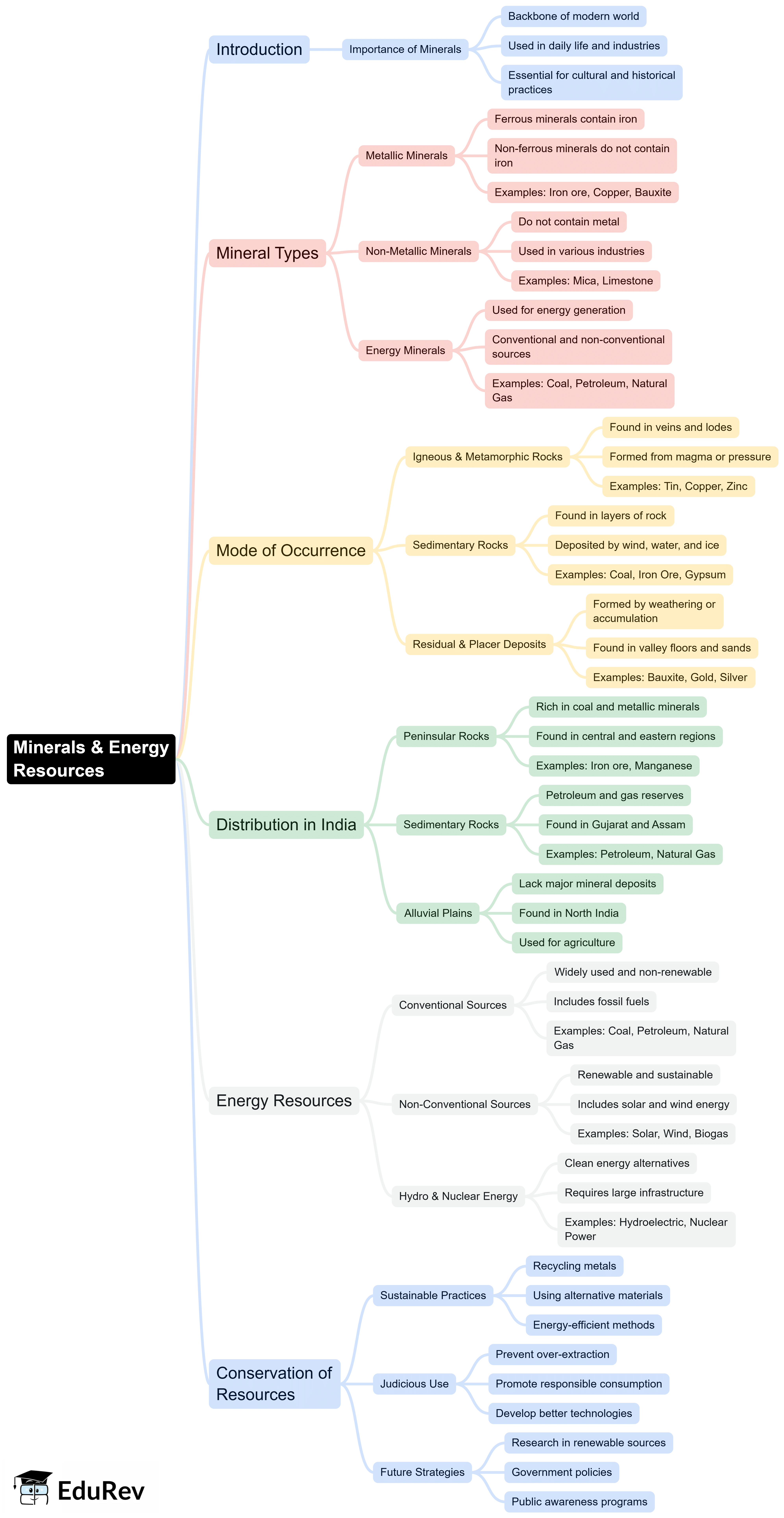Class 10 Exam > Class 10 Notes > Social Studies (SST) Class 10 > Mind Map: Minerals & Energy Resources
Mind Map: Minerals & Energy Resources | Social Studies (SST) Class 10 PDF Download

The document Mind Map: Minerals & Energy Resources | Social Studies (SST) Class 10 is a part of the Class 10 Course Social Studies (SST) Class 10.
All you need of Class 10 at this link: Class 10
|
88 videos|630 docs|79 tests
|
FAQs on Mind Map: Minerals & Energy Resources - Social Studies (SST) Class 10
| 1. What are the primary types of minerals and energy resources? |  |
Ans.The primary types of minerals include metallic minerals (like iron, copper, and aluminum) and non-metallic minerals (like coal, limestone, and salt). Energy resources can be categorized into renewable (such as solar, wind, and hydroelectric power) and non-renewable resources (like coal, natural gas, and oil).
| 2. How do minerals and energy resources impact the economy? |  |
Ans.Minerals and energy resources are vital to economic development as they provide raw materials for industries, create jobs, and contribute to GDP. The extraction and processing of these resources can stimulate local economies and enhance trade, but over-reliance can also lead to economic vulnerabilities.
| 3. What are the environmental impacts of mining and energy extraction? |  |
Ans.Mining and energy extraction can lead to significant environmental issues, including habitat destruction, soil erosion, water pollution, and air quality degradation. Sustainable practices and regulations are essential to minimize these impacts and ensure that resource extraction does not compromise environmental health.
| 4. How is the demand for renewable energy resources changing? |  |
Ans.The demand for renewable energy resources is increasing due to concerns about climate change, energy security, and the depletion of fossil fuels. Governments and industries are investing in cleaner energy technologies, leading to a transition towards more sustainable energy sources like solar, wind, and geothermal energy.
| 5. What role does technology play in the extraction of minerals and energy resources? |  |
Ans.Technology plays a crucial role in the extraction of minerals and energy resources by improving efficiency, safety, and environmental sustainability. Advanced techniques such as automated mining, hydraulic fracturing, and enhanced oil recovery are helping to maximize resource extraction while minimizing negative impacts.
Related Searches

















